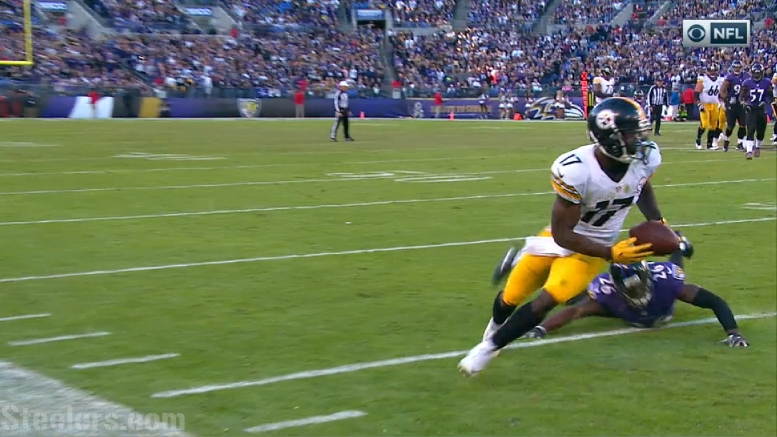Eli Rogers emerged onto the scene for the Pittsburgh Steelers last season as a former undrafted free agent who spent his rookie season on injured reserve after hurting his foot before even getting a look in a preseason game. He was immediately installed in the first game as the team’s slot receiver and proceeded to catches h48 passes for 594 yards and three touchdowns, averaging 12.4 yards per reception.
But that certainly doesn’t mean that there isn’t room for improvement. Specifically, I am looking to see improvement in terms of making the most of his opportunities with the ball in his hands: yards after the catch.
In our statistics, we have measured that Rogers actually averaged 4.29 yards after the catch per reception and a total of 206 yards after the catch. But one has to consider what that actually means relative to pass distance.
The average depth of target on passes thrown in Rogers’ direction last season was just 9.4 yards. If we’re talking about just his receptions, then that actually shrinks all the way down to about eight yards per reception from the line of scrimmage. 24 of his receptions came on targets that were within five yards of the line of scrimmage. If you catch a pass behind the line of scrimmage and gain five yards, that’s not particularly impressive.
108 of Rogers’ yards after the catch were produced on those 24 plays, plays that themselves only produced 159 net yards. That is an average of just 6.6 total yards per play, which indicates to me that he largely is not making the most of his opportunities.
Of course it should go without saying that by and large such short passes are often a function of an extension of the running game and are not necessarily designed to be broken into big plays. But even taking that into consideration, he has not always been able to capitalize on the times that he was found in the open field.
The most yards after the catch that he had during the year was 21 yards, which he did twice. One of them came from three yards behind the line of scrimmage, and was his biggest YAC play of the year. The other one came on a target 18 yards down the field for his biggest total-yard play of the year.
Of his 48 receptions, however, he had just five that reached double-digit YAC yards. The Steelers as a team had 73 such plays. Le’Veon Bell had 29 of them. Sammie Coates had five despite far fewer opportunities.
Rogers has quite a bit of potential to be a very good slot receiver. His route-running is more mature than he is, and he has the quickness to gain separation when it matters. In order for him to be a championship-level piece, however, he needs to be more deadly with the ball in his hands.








